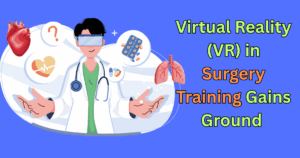Medical students should read this article, learn about the Top 10 Government Medical Colleges Upgraded with Simulation Labs, and then begin with the application process.
Top 10 Government Medical Colleges Upgraded with Simulation Labs
In a major move to enhance practical learning, the Ministry of Health and Family Welfare has upgraded simulation laboratories in the top 10 government medical colleges across India. These labs are designed to provide medical students with hands-on experience using high-fidelity mannequins, virtual patients, and real-world clinical scenarios—without involving actual patients.
Simulation labs serve as a bridge between theory and practice, providing a safe environment for students to make mistakes and learn from them. This is especially crucial for early-year MBBS students who have limited exposure to live patients.
The Medical Colleges Benefiting from the Upgrade

The following prestigious government institutions have been equipped with advanced simulation labs under the central initiative:
| Rank | Medical College | Location |
|---|---|---|
| 1 | All India Institute of Medical Sciences (AIIMS) | New Delhi |
| 2 | Postgraduate Institute of Medical Education and Research (PGIMER) | Chandigarh |
| 3 | Armed Forces Medical College (AFMC) | Pune |
| 4 | Maulana Azad Medical College (MAMC) | New Delhi |
| 5 | King George’s Medical University (KGMU) | Lucknow |
| 6 | Madras Medical College | Chennai |
| 7 | Grant Medical College | Mumbai |
| 8 | Seth GS Medical College | Mumbai |
| 9 | Institute of Medical Sciences, BHU | Varanasi |
| 10 | Government Medical College | Thiruvananthapuram |
We selected these colleges based on their academic performance, patient load, and readiness to integrate simulation-based learning into their curriculum.
Key Features of the New Simulation Labs
The newly installed simulation labs come with a wide range of equipment and technology aimed at replicating real hospital environments. Key features include
- High-Fidelity Mannequins: Capable of mimicking breathing, heartbeats, seizures, and trauma.
- Clinical Skill Stations: For practicing suturing, cannulation, CPR, and surgical techniques.
- Virtual Reality (VR) Integration: For immersive anatomy, laparoscopic, and emergency training.
- Communication Skills Modules: For breaking bad news, counseling, and patient interaction training.
- Team-Based Simulation Rooms: To train for code blue, OT coordination, and trauma team responses.
How Students and Faculty Are Responding
Students have welcomed this development as it allows for repetitive practice and reduces their dependence on limited clinical exposure. Many final-year MBBS students and interns are now using these labs to refine their skills before entering real-life hospital settings.
Faculty members are also undergoing training in simulation-based education to maximize the lab’s effectiveness. Several institutions have already conducted mock drills and interdisciplinary simulations involving both nursing and paramedical students.
Government’s Vision and Future Roadmap
The government has plans to roll out similar simulation labs in 100 more medical colleges in the coming years. The National Medical Commission (NMC) has also proposed integrating simulation assessments as part of MBBS evaluations.
Future upgrades will likely include AI-driven simulators, gamified assessments, and cloud-based performance tracking systems to help students improve through analytics and feedback.
Benefits for the Healthcare Ecosystem
The impact of simulation labs goes beyond student training. By ensuring that graduates are well-versed in clinical skills before patient interaction, these labs contribute to
- Improved patient safety
- Reduced medical errors
- Enhanced confidence among young doctors
- Faster clinical decision-making in emergencies
In conclusion, the installation of simulation labs in India’s top government medical colleges is a transformative step that promises to elevate the quality and safety of future medical practice.
We appreciate you reading this article and staying informed with us.





